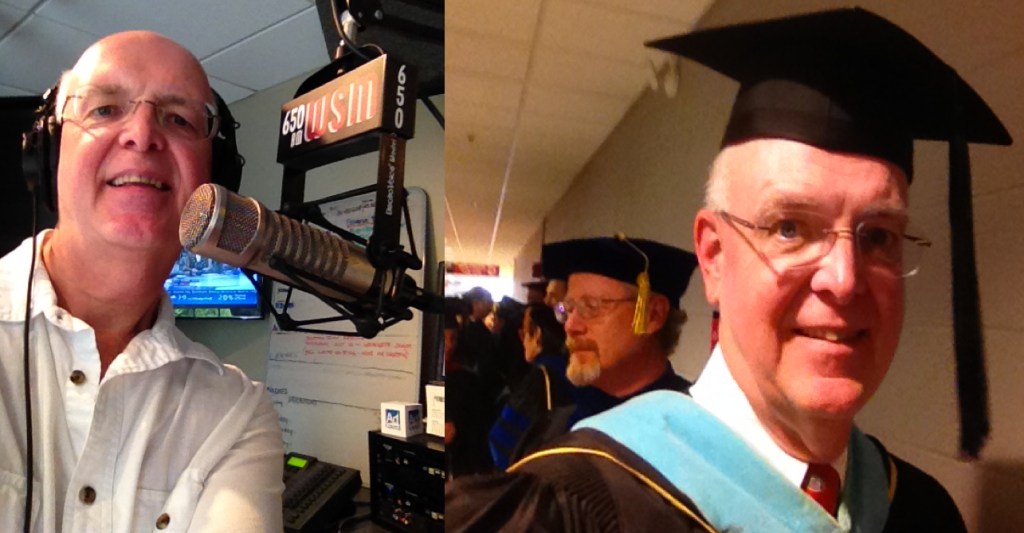The past couple of weeks have featured some pretty intense webinars on where the media industry is headed and my mind is still spinning from all that was shared.
Let’s start with the meaning of BHAG (pronounced Bee-Hag); which means to have a Big Hairy Audacious Goal, a term coined from the book Built to Last: Successful Habits of Visionary Companies by Jim Collins and Jerry Poras. President Kennedy presented America with a BHAG when he said the United States would put a man on the moon.
“We choose to go to the moon in this decade and do the other things, not because they are easy, but because they are hard, because that goal will serve to organize and measure the best of our energies and skills, because that challenge is one that we are willing to accept, one we are unwilling to postpone, and one which we intend to win.”
-John F. Kennedy, President
The Elements of a BHAG
All companies have goals; probably too many actually, causing employees to have a lack of collective focus on what’s really important. So, what are the elements of a BHAG?
- A BHAG is a compelling, long-term goal that brings employees together and inspires them to take action.
- BHAGs should pull employees out of a slump and give them a reason to tackle a big-picture-type plan.
- BHAGs should cause an organization to focus on a common enemy, and on a defined target, while bringing about an internal transformation.
From what I’m hearing in these webinars,
the radio industry needs a BHAG for digital.
Gordon Borrell
In a Radio Advertising Bureau (RAB) webinar “Digital Sales Approach $2 Billion” Gordon stressed the importance of have a long-term revenue BHAG for digital sales. He said radio stations should consider hiring digital-only sales reps.
Larry Rosin
Edison Research President Larry Rosin co-hosted the 25th Anniversary of Edison’s “The Infinite Dial Study.” It was truly eye-opening to realize how much audio media access has changed over the last quarter century.
- Internet access 1998 (31%) versus 2023 (95%)
- Households with computers 1998 (~50%) versus 2023 (91%) where computers have become smartphones we carry with us
- Streaming digital audio listening 1998 (6%) versus 2023 (70%)
Why I Stream ALL My Radio Listening
On January 9, 2022, I began my 8th year of blogging with an article on why I stream all of my radio listening and how it’s so easy for anyone to do what I do. In our home, we effortlessly connect to the internet and streaming digital audio using Amazon’s Echo. I can’t remember the last time I played a record, cassette tape, reel-to-reel tape, CD or thumb drive; anything I want to hear can be heard on demand by voice command.
As a family, we don’t’ have the latest cars, Sue has a 2006 Subaru Forester and I have a 2009 Honda Accord, but both vehicles seamlessly connect to our iPhones when we enter the car and allow us to stream any digital audio content through our car’s audio systems.
Comscore Year-in-Review
As of December 2022, 91% of America’s population over the age of 18 are digital users. The Comscore webinar was especially eye-opening, when they told the audience that the “digital population grew relatively 2x more than the total population in the last 3 years with increasing emphasis on mobile usage.”
An average adult internet user will spend almost 4.5 hours a day
accessing the internet via desktop or mobile.
-Comscore Media Metrix Multi-Platform United States 18+ Total Digital Population
Willie Sutton when asked why he robbed banks, responded “because that’s where the money is.” Now you know why all media entities are racing to win with their digital media offering.
The interconnectedness of audiences
is where the wins will be found in measurement.
-Jason Clough, Senior Director, Partnerships & Insights, Comscore
I think Jason Clough perfectly summed up what radio’s BHAG should be in the above slide from his presentation: if media wants to stay relevant to its audience and win with any audience measurement metric, it must interconnect with them.
But, instead of “interconnectedness”…
Think “EXPERIENCES.”
Is your radio station delivering the best listener experience, wherever and however they access your programming?




 Last week I told you about how our world is exploding with media to the point of over-saturation. Not only are we drowning in a plethora of media, the rate of new ways to communicate keeps accelerating at an unfathomable pace.
Last week I told you about how our world is exploding with media to the point of over-saturation. Not only are we drowning in a plethora of media, the rate of new ways to communicate keeps accelerating at an unfathomable pace.